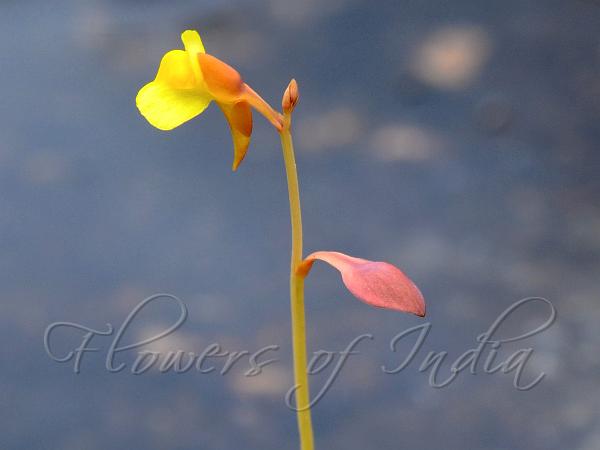|
| Two-Flower Bladderwort |
|

|

| File size | 391595 |
| Original date | 7/20/16 9:25 AM |
| Resolution | 0 x 0 |
| Flash | Flash did not fire, auto |
| Focal length | 60.0mm |
| Exposure time | 1/250s |
| Aperture | 10.0 |
| Focus Distance | |
| Metering Mode | Multi-segment |
| Camera make | NIKON CORPORATION |
| Camera model | NIKON D5100 |
| Sensor type | OneChipColorArea |
|
|
|
|
Photo: |
Botanical name: Utricularia bifida Family: Lentibulariaceae (Bladderwort family)
Synonyms: Utricularia wallichiana, Utricularia humilis
Synonyms: Utricularia wallichiana, Utricularia humilis
Two-Flower Bladderwort is an annual, carnivorous,
terrestrial herb with thread-like roots, runners up to 2.5 cm long,
branched, thread-like. Foliar organs are up to 8 mm long, narrowly
linear, blunt at tip, 1-nerved. Traps are numerous, about 1 mm across,
kidney-shaped, stalked; appendages 2, subulate. Flowers are yellow,
borne in racemes 2-7 cm long, erect, solitary, 1-5-flowered. Bracts are
1-2 mm long, ovate to linear-lanceshaped, basifixed, pointed at tip.
Flowers are 4-8 mm long; flower-stalks 2-4 mm long, broadly winged,
erect in anthesis, recurved in fruit. Sepals are 2, almost equal, 2-4 x
2-3 mm, broadly ovate, tip blunt. Upper lip of the flowers is 2-4 x 1-2
mm, linear-oblong, rounded at tip; lower lip 2-4 mm across, round to
obovate, rounded at tip; spur subulate, about as long as the limb.
Filaments straight. Ovary ovoid; stigma 2-lipped. Capsules are about
2.5 x 2 mm, ovoid, slightly compressed. Seeds ovoid, testa netveined.
Two-Flower Bladderwort is found in South India, Indo-Malesia to
Australia and East Asia. Flowering: July-September.
| Identification credit: Prasad Dash, N.S. Dungriyal, Janarthanam | Photographed at Devarayanadurga, Karnataka. |
• Is this flower misidentified? If yes,